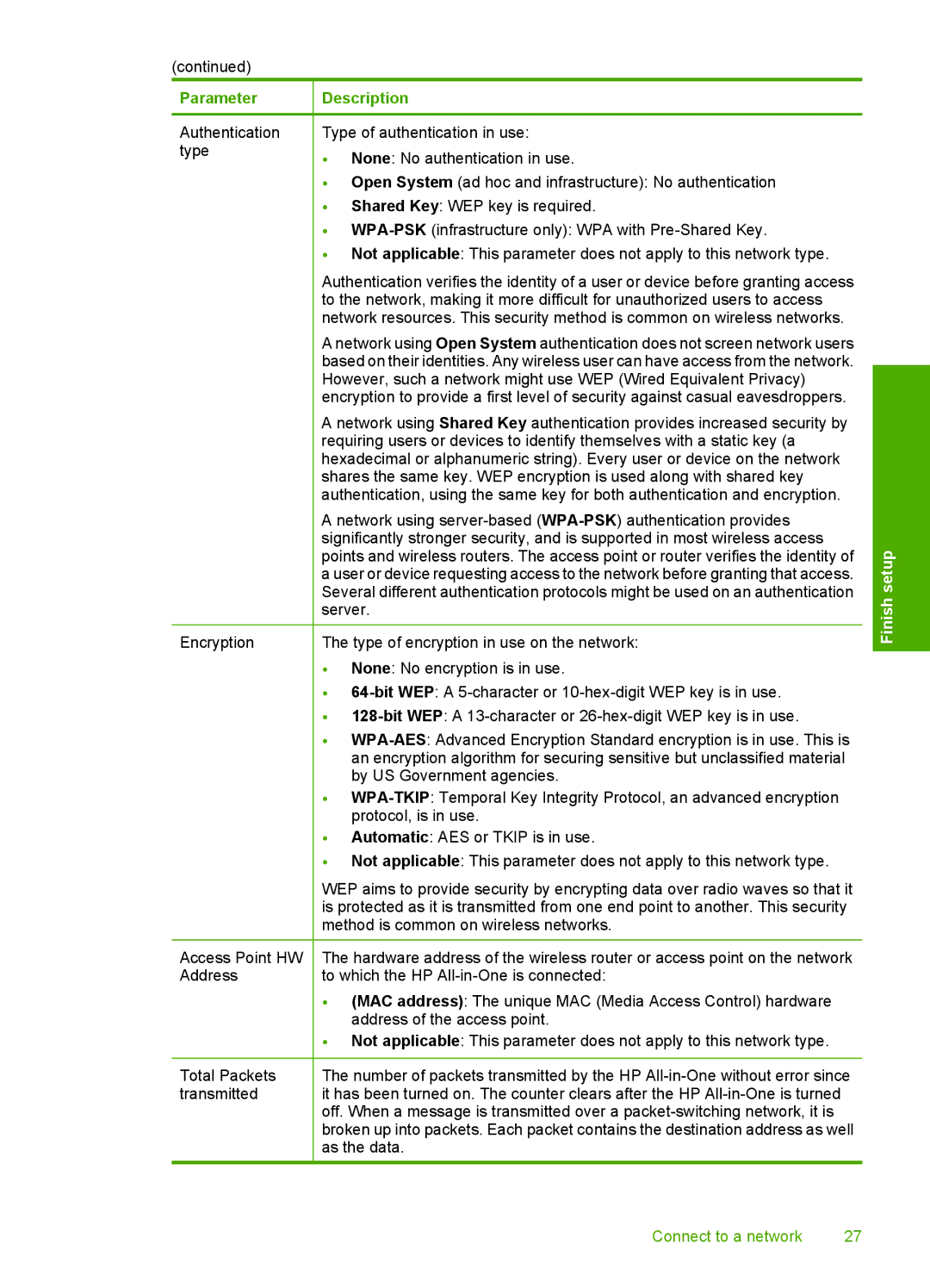
(continued)
Parameter
Authentication type
Encryption
Access Point HW Address
Total Packets transmitted
Description
Type of authentication in use:
•None: No authentication in use.
•Open System (ad hoc and infrastructure): No authentication
•Shared Key: WEP key is required.
•
•Not applicable: This parameter does not apply to this network type.
Authentication verifies the identity of a user or device before granting access to the network, making it more difficult for unauthorized users to access network resources. This security method is common on wireless networks.
A network using Open System authentication does not screen network users based on their identities. Any wireless user can have access from the network. However, such a network might use WEP (Wired Equivalent Privacy) encryption to provide a first level of security against casual eavesdroppers.
A network using Shared Key authentication provides increased security by requiring users or devices to identify themselves with a static key (a hexadecimal or alphanumeric string). Every user or device on the network shares the same key. WEP encryption is used along with shared key authentication, using the same key for both authentication and encryption.
Anetwork using
The type of encryption in use on the network:
•None: No encryption is in use.
•
•
•
•
•Automatic: AES or TKIP is in use.
•Not applicable: This parameter does not apply to this network type.
WEP aims to provide security by encrypting data over radio waves so that it is protected as it is transmitted from one end point to another. This security method is common on wireless networks.
The hardware address of the wireless router or access point on the network to which the HP
•(MAC address): The unique MAC (Media Access Control) hardware address of the access point.
•Not applicable: This parameter does not apply to this network type.
The number of packets transmitted by the HP
Finish setup
Connect to a network | 27 |
